Scandinavia consists of the countries of Denmark, Sweden, and Norway. Any of these countries can make a great vacation, but you’ll need a large amount of time if you want to thoroughly explore each one. Instead of covering everything, this Scandinavia itinerary will be different. We’ll visit all three countries, but instead of exploring their amazing countrysides, we’ll spend our 10 days in Scandinavia exploring its major cities. Each city that we’ll visit offers a little something different and combining all of these together can make an awesome trip.
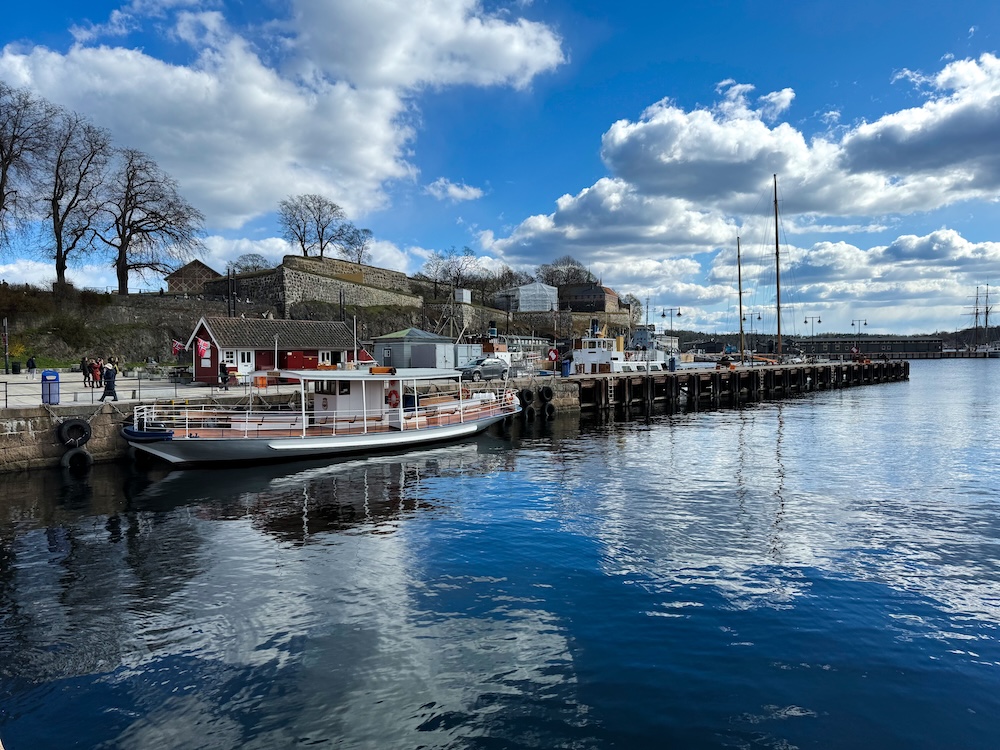
10 Days in Scandinavia
This 10 day Scandinavia itinerary starts in Copenhagen, Denmark and finishes in Oslo, Norway. Therefore, you’ll need to purchase a multi city ticket to avoid backtracking to your starting destination. This backtracking costs time and money (versus two one way tickets), so save yourself the headache and purchase a multi city ticket.
Now with that said, feel free to reverse this Scandinavia itinerary. If it’s cheaper to fly into Oslo and out of Copenhagen, you should absolutely consider reversing this Scandinavia itinerary. Scandinavia is an expensive destination, so save money when you can.
Day 1 – Hello, Copenhagen
This 10 day Scandinavia itinerary starts in Copenhagen, the capital of Denmark. If you’re arriving from the airport, you’ll need to transfer into the city. Thankfully, this transfer is quick and cheap for airport transportation.
Copenhagen’s metro connects the airport to the city center with direct and frequent trains. At the airport, follow the signs for the metro and purchase a ticket in the machines. On the machine, enter where you are traveling too (for me, it was the Kongens Nytorv metro station) and a ticket will print out. The best part is this ticket doesn’t cost any more than any other metro ticket (although metro tickets in Scandinavia are more expensive than you may expect). Board the metro and before you know it, you’ll be in the Copenhagen’s city center.

Drop your bag off at your hotel and then head out to try to conquer any jet lag.
I never try to plan too much on my first day, especially if I’m crossing several time zones and fighting a battle with jet lag. So in lieu of museums (we’ll cover some tomorrow), head out on a walk. Join up with a guide or make your own DIY walking tour of the city. Stroll Nyhavn (the colorful harbor), walk out to the Little Mermaid statue, or wander down Strøget, a fun (and long) pedestrian shopping street.
Additionally, you could visit some free sights like Copenhagen’s City Hall or one of the many churches around Copenhagen—Frederiks Kirke was my favorite.
Sleep: Copenhagen, Denmark
Day 2 – Exploring Copenhagen
Today is our one full day in Copenhagen so it’s time to make it count. Today we’re going to pack in all of the sightseeing that we didn’t get to yesterday.
Start with a visit to Rosenborg Palace, which was created as a summer home for Danish royalty in the early 1600s. You’ll learn about Danish Royal history as you tour through the castle. Plus, don’t miss the Treasury in the basement of the castle where the royal jewels are kept.
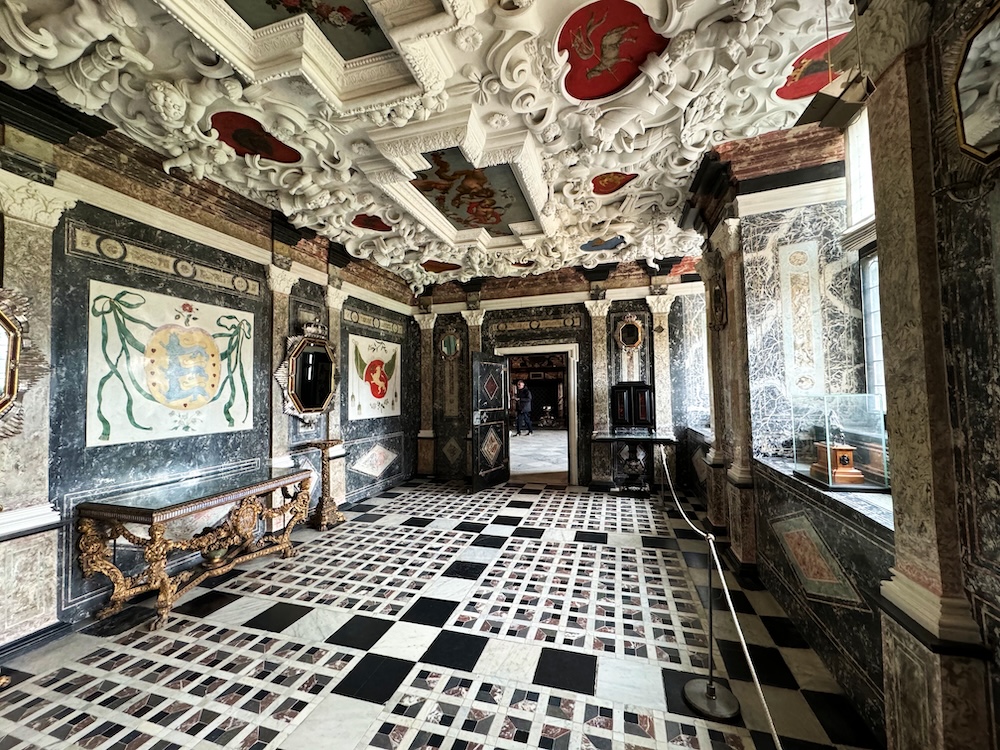
Next, we’re going to venture southeast to Christiania. This area of Copenhagen was once a former military base. In the 1970s, squatters took over this land and formed Christiania, a community that functions independently of Copenhagen. Christiania still exists today and many would describe it as a “hippy community”. I guess that’s true to an extent, but I think it’s worthwhile to visit and see for yourself.
When you enter Christiania, you’ll likely walk down the Main Street, what used to be known as Pusher Street. In an attempt to clean up their community, the residents of Christiania voted to eliminate Pusher Street and redevelop the area, so if you read anything about people who visited years ago, they’ll likely have a much different experience. When I visited, that redevelopment was still a work in progress.
However, as you work your way into the community, you’ll find several shops and restaurants. This seems to be where so many tourists stop. Venture further to see the real Christiania, a peaceful and quiet place that feels a world away from Copenhagen. As you leave Christiania, look up under the gateway. You’ll notice a sign stating that you are entering the E.U.
Now we’re going to work our way back into the city. Before you get too far though, consider a visit to the Church of Our Savior. This church is famous for its round tower which you can climb for a fee (the interior of the church is free).
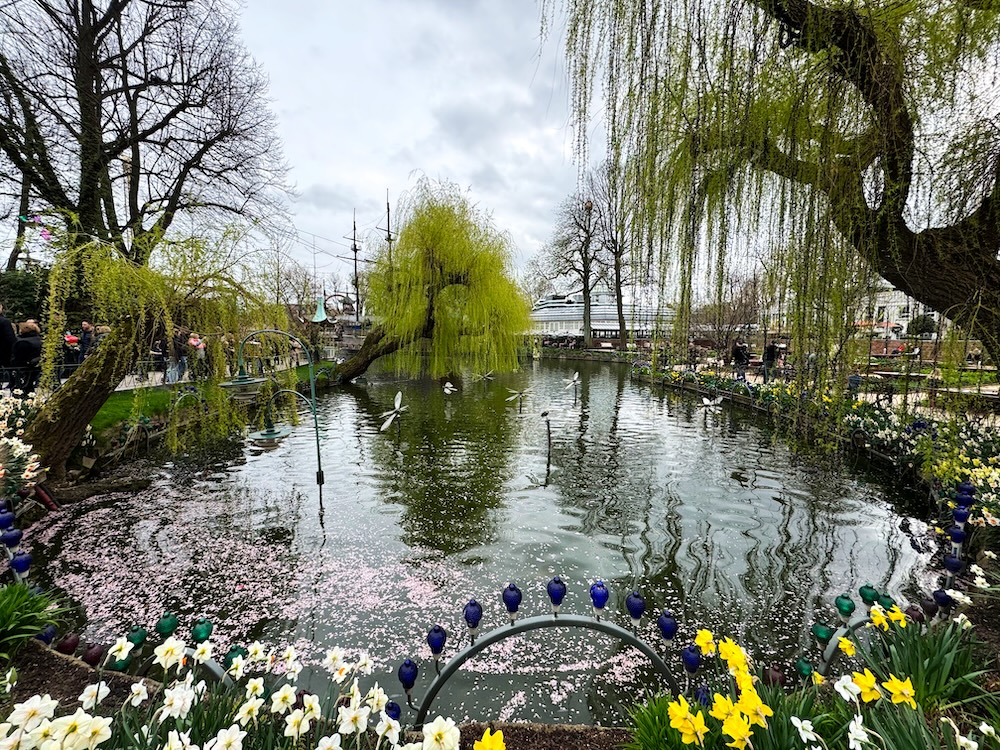
Back in central Copenhagen, pay a visit to Tivoli Gardens. This amusement park is one of the oldest in the world and offers a break from traditional sightseeing. The price can be steep, especially if you plan to ride any of the rides, but I think it’s still a fun experience to wander the park and people watch. Plus, at night, the park is lit up in a brilliant light display.
For the evening, it’s traveler’s choice. By now, most museums are likely closed so it’s up to you how you want to spend your evening. Continue enjoying Tivoli Gardens or visit some of the areas you didn’t get a chance to yesterday.
Sleep: Copenhagen, Denmark
Day 3 – Denmark to Sweden
We’re saying goodbye to Copenhagen and Denmark and moving onto the second country of this 10 day Scandinavia itinerary. Even on the high speed train, it’s a long journey from Copenhagen to Stockholm. With no issues (more on this later), expect to spend 5 and a half hours on the train. Therefore, I recommend catching a train earlier in the day so you can enjoy your first taste of Sweden in the afternoon. I took a train at 8:30am and I’d recommend looking for a train around this time.
My train had issues (the emergency brakes kept deploying) and my train took over an hour and a half longer than normal. It’s for these reasons that I choose to make my first day in a city a light exploring day. Delays happen and if you have zero reservations, there’s one less layer of stress.
Once you get to Stockholm, drop your bag off at your hotel before heading out for some lunch. After lunch, there’s two areas I’d recommend exploring today.

The first is modern Stockholm. Here you’ll find pedestrian shopping streets. While you also had these in Copenhagen (and will see these in other countries), note how they have a different feel. This part of the city feels much more modern (hence why I’ve referred to it as “modern Stockholm”). I personally wasn’t a huge fan but I think makes an interesting comparison to wander both modern Stockholm and the Old Town.
Obviously the second area I recommend exploring is the Old Town. With its charming lanes and classic architecture, this area is fun to wander. You’ll find museums and churches, but don’t worry about covering museums too much today. Tomorrow is a very heavy museum day, but you could easily get a head start today if you feel up to it.
For me, I tried to focus on two DIY walking tours. The first focused on modern Stockholm while the other focused on the Old Town. I say “tried to” because I only completed one tour. It was cold, very windy, and rainy when I arrived in Stockholm so exploring just was not enjoyable. There’s plenty of time in the upcoming evenings so if you also have terrible weather, you’ll have some more opportunities to try again.
Sleep: Stockholm, Sweden
Day 4 – Exploring Stockholm
Today is museum overload in Stockholm. Out of all if the cities I visited in these 10 days in Scandinavia, Stockholm is where I’d return first because there were so many things I just couldn’t fit in. But we’re going to do our best to cover as much ground as possible with one day in Stockholm.
Start your morning off with a visit to Stockholm’s City Hall. Unlike other city halls in Scandinavia, Stockholm’s city hall must be visited on a guided tour. So, plan to take the first tour of the morning. You’ll learn about the building itself but also hear about how this building is used for the Nobel Prize banquet.
From City Hall, cross the city to visit the Vasa Museum. This may have been my favorite museum in Scandinavia. In the 1600s, the Vasa warship sank less than 1000 meters into its maiden voyage. In the late 1900s, the ship was salvaged and is now housed in the Vasa Museum which tells the story of the ship. It’s was skeptical if I’d like this museum, but I loved it. It’s a must do when you’re in Stockholm.
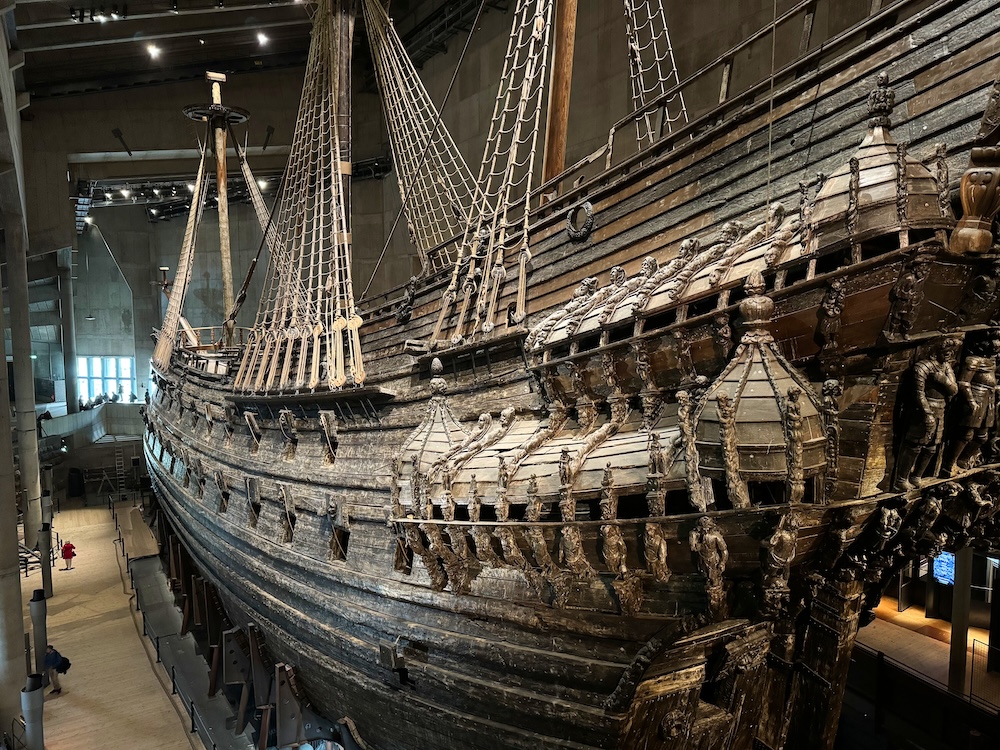
Continuing on you have your choice of museum. Art lovers can visit the National Museum, for Sweden’s national art gallery. Highlights include paintings by Remembrandt as well as plenty of Swedish artists.
For those less interested in art, consider a visit to the Hallwyll Museum. This is a house from the 1900s that has been preserved and turned into a museum. It’s decorated in the rococo style and reminds me a lot of the mansions I’ve toured in the United States from our Gilded Age. This was pretty cool too and it feels like few English speaking tourists make it here. Admittedly, the Hallwyll Museum wasn’t on my initial list, but I received a recommendation from a friend of a friend and I did enjoy my visit.
Finally head into the Old Town to visit the Nobel Prize Museum. The museum itself is small but it’s still interesting. You’ll learn a bit about the history of the founder of the Nobel Prize, Alfred Nobel, but then you’ll learn a bit more about the recipients of the Nobel Prize. This museum holds items that the Nobel Prize recipients have deemed important. You’ll find everything from a researchers’ favorite pipet, to lab books, to beer bottles made in honor of a researchers best friend. Use the included audio guide (access it from your smartphone) to get the most out of your visit.
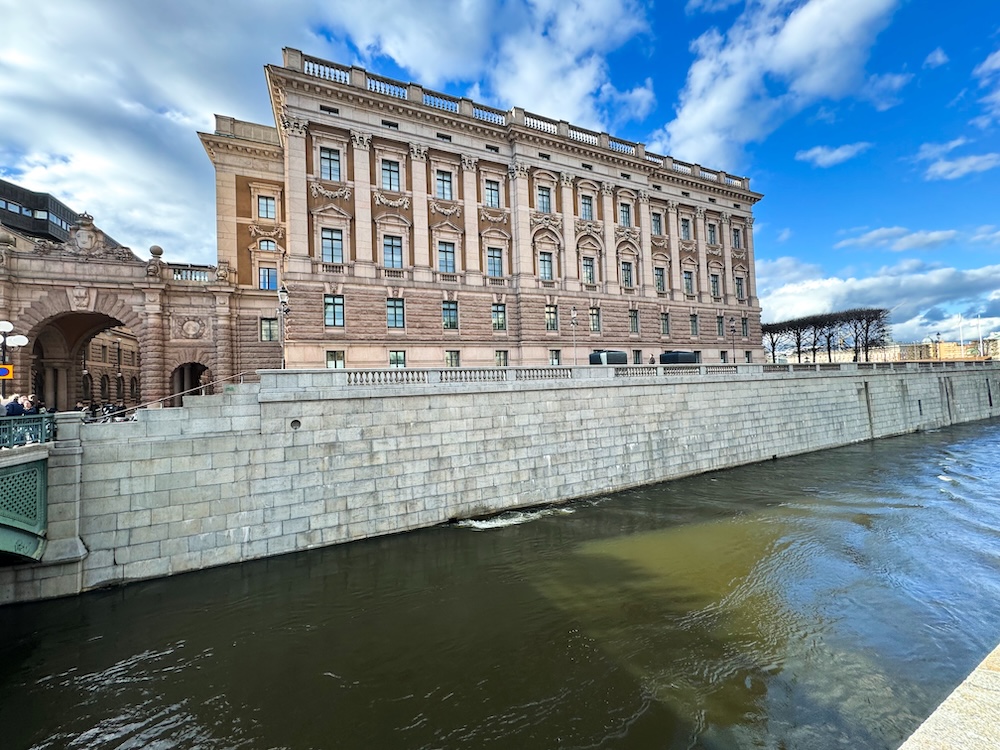
It’s been a busy museum day so I’m leaving the evening open to you. Wander the Old Town, find a good dinner, or head back to your hotel to relax. The choice is yours.
Sleep: Stockholm, Sweden
Day 5 – A Day Trip from Stockholm
On this 10 Day Scandinavia itinerary, we’re visiting four cities. That means that one city has to get an extra day. I’ve given it to Stockholm and it’s your choice how you want to spend it. Either continue to enjoy the city or venture off onto a day trip from Stockholm. Here’s a few ideas to get you started.
Option 1 – More Museums: Consider visiting some of Stockholm’s other museums. If you didn’t tour the National Museum or the Hallwyll Museum, tour it today. Visit the Abba Museum where the slogan is “Walk in, Dance Out”. There’s also the Photography Museum and Royal Palace. Plus, I haven’t even started on the various churches you can tour in this city.
Option 2 – Stockholm’s Aarchipelago: This was high on my list as the scenery looks stunning, but I was too early in the season to actually do this (aim for very late spring or summer if you want to visit). Sightseeing cruises can take you past some of the best locations while giving you context about Stockholm (and some provide a meal).
Option 3 – Islands Near Stockholm: Visit one of the islands in Stockholm’s Archipelago. Rather than just touring my sightseeing boat, get off and explore. Sandhamn and Vaxholm are two popular options.
Option 4 – Uppsala: Visit the university town of Uppsala. There’s a fabulous church, the Gustavianum featuring the amphitheater for observing operations, and the university library which holds the Silver Bible, a bible written in the ancient gothic language, among other treasures.
Option 5 – Drottningholms Slott: Visit Drottinngholms Slott and tour the castle and wander the expansive grounds.
What I did: I wanted to explore the archipelago, but I was too early in the season. The ferry boats don’t typically start running until May (and I was here in mid April). So instead I started my morning in Uppsala to tour the cathedral and university library. I returned to Stockholm and transferred to Drottningholms Slott and to see the castle exterior and castle grounds (as the castle itself was closed that day).
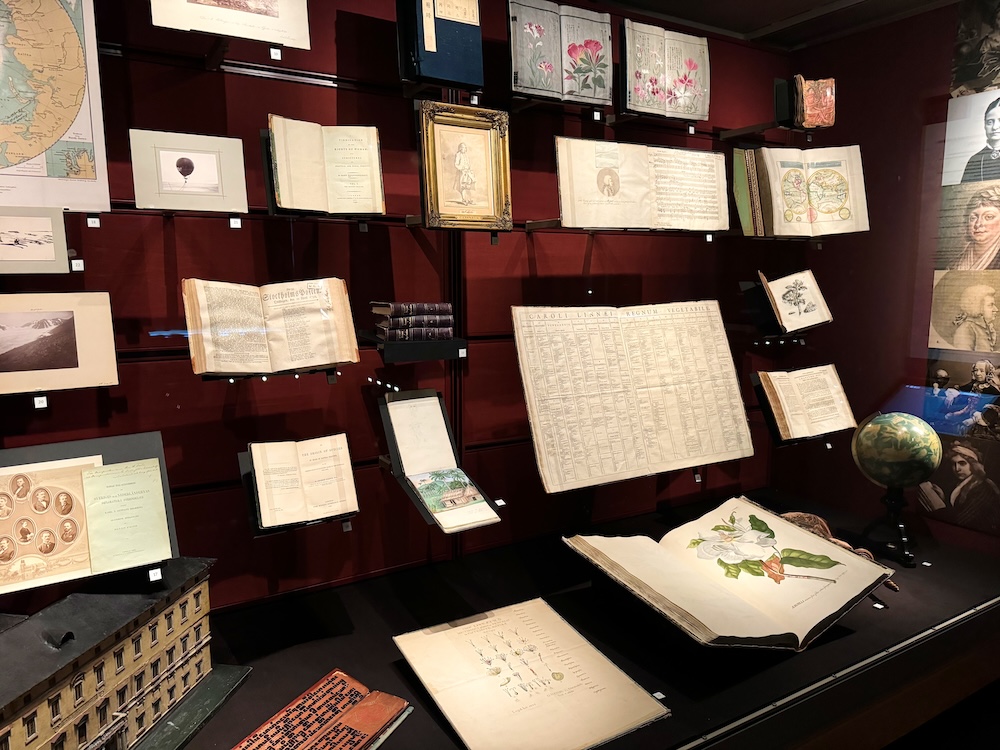
Important Note: Depending on your visit, you may need to swap days 4 and 5. When I visited, Day 4 ended up on a Monday when half of the museums in Stockholm were closed. So, I did my day trip on Monday (day 4) and spent Tuesday (day 5) exploring the museums in Stockholm.
Sleep: Stockholm, Sweden
Day 6 – Stockholm to Gothenburg
It’s time to move to the next city on this 10 day Scandinavia itinerary. This time, we’re staying in Sweden, but transferring to Gothenburg. Trains take three to four hours, depending on which train you select. Plan to travel in the morning so you can spend the afternoon in Gothenburg.
Once in Gothenburg, head for some lunch. There’s plenty of options throughout the city. I went to the Market Hall and had one of my cheapest, most filling meals in Scandinavia (and yes, it tasted good too).
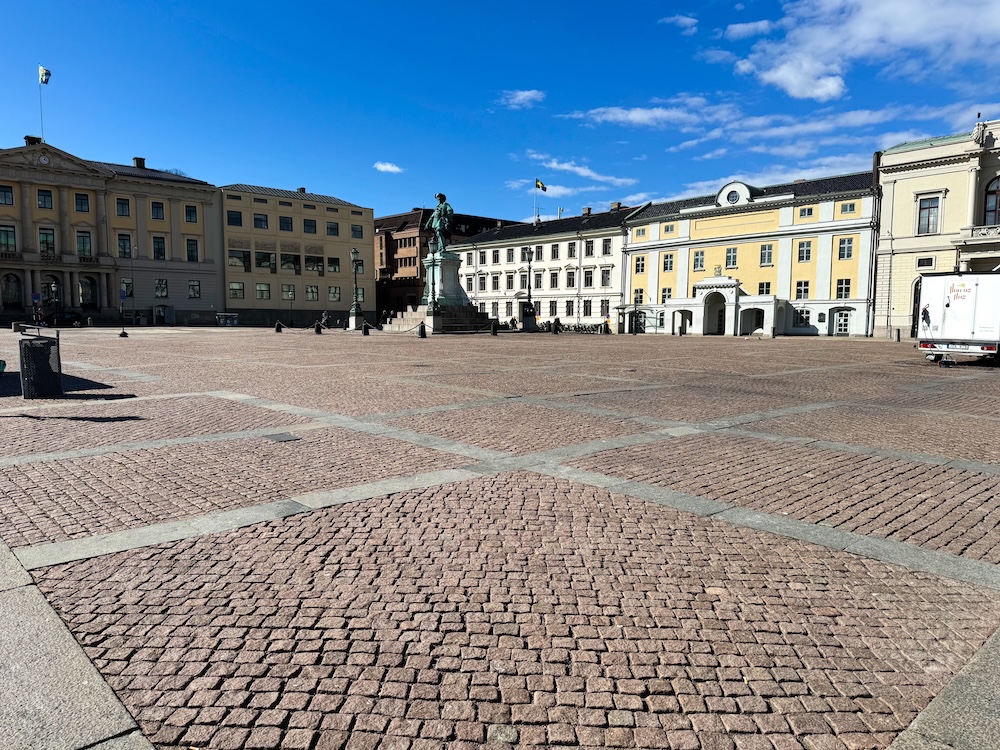
This afternoon, I’m giving you a break from a heavy sightseeing itinerary. Gothenburg is lighter on sights than the other cities that we’ve visited. I think it’s a great idea to slow down just a bit to recharge before the last of this Scandinavia itinerary. However, if you feel ambitious, get a head start on some of your sightseeing tomorrow.
Sleep: Gothenburg, Sweden
Day 7 – Exploring Gothenburg
As mentioned, I feel like Gothenburg has fewer sights than the other cities of this Scandinavia itinerary, but there’s a handful of sights you can look out for.
Gothenburg Cathedral – While not the most impressive cathedral in Scandinavia, and certainly not the most impressive cathedral in Europe, it’s free to visit and makes a quick stop.
Palm House – This seems to make it onto every Gothenburg itinerary and sure it’s cool, but I do think there’s a better item on this list if you’re into gardens. The Palm House is a green house in central Gothenburg that’s home to numerous plants, but don’t stop just at the greenhouse. There are gardens nearby that can be nice to walk through. The best part of all of this? It’s free.
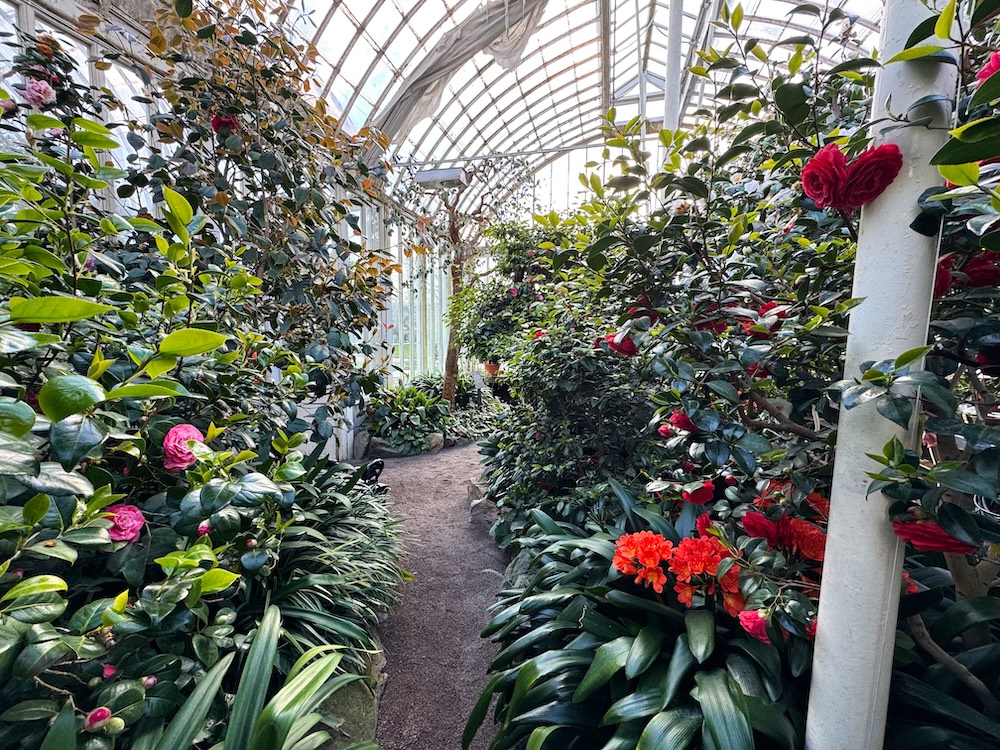
Fish Church – Confusingly this is not a church, but a market. Unfortunately, I don’t have any first hand experience as the Fish Church was closed during my visit, but every single list of things to do in Gothenburg so I have to include it on this list.
Haga District – This is a fun little pedestrian only district full of shops and cafes. Stop here for a break during sightseeing. Either get a full meal or just break for a pastry and coffee.
Botanical Gardens – Similar to the Palm House, you’ll find a large, diverse collection of plants here. However, I found these gardens just so much more impressive and expansive. There’s so many different areas to walk, plus see if you can find the walk that takes you to a view of Gothenburg. And yes, this is free too.
Gothenburg Museum – This is one thing I didn’t do in Gothenburg, but if you’re interested in learning about the history of this city, add the Gothenburg Museum to your list.
Skansen Kronan – This castle tower sits atop a hill and a climb up here offers a fantastic view of Gothenburg. Plus, there’s the added benefit of the tower being at the top of the hill, so circle the tower and take in the city from all angles.
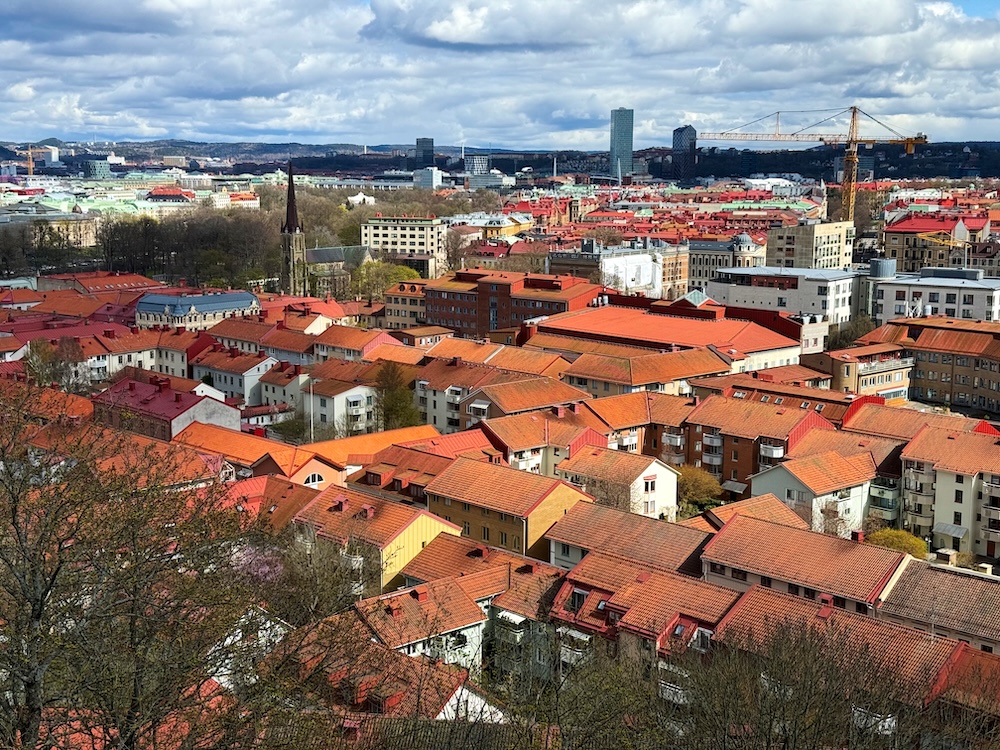
What I did – I visited the Gothenburg Cathedral and attempted to visit the Fish Church on Day 6. Then on Day 7, I started at the Palm House, wandered the Haga District, Visited Skansen Kronan, and finished at the Botanical Gardens.
Sleep: Gothenburg, Sweden
Day 8 – Gothenburg to Oslo
Today is the last travel day of this 10 day Scandinavia itinerary. Head to the Gothenburg bus station and catch a bus to Norway, the final country on this itinerary. Expect the bus to take about 3 and a half hours.
We’ve finally arrived at the last stop on this Scandinavia itinerary and we’re going to start by exploring Oslo. As always, I’m accounting for delays so I’m not planning any major sight seeing today. However, there’s still a few areas that you should focus on.
I’d recommend starting with the Old Town. Walk the streets and make your way to City Hall. You’ve probably recognized a theme of visiting city halls by now, but pop in to Oslo’s. It’s free to visit and a visit can be quick. Take note of the main galleria as you enter and look at all of the artwork all around you. Head up the stairs to visit any of the open rooms.
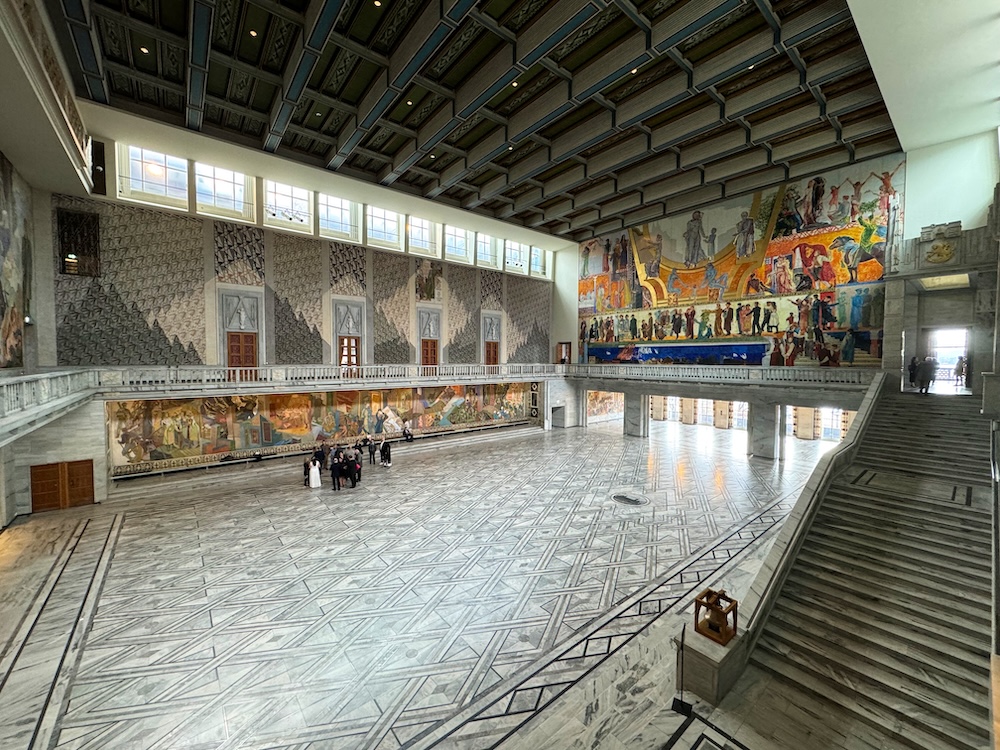
From City Hall, you’re right near the harbor front, but venture outside and along the harbor front for some great views. For the best views, head up to Akershus Fortress which is the old fortress of the city. Since it sits a bit higher up, you’ll get some better views. You can tour inside the fortress, but that costs extra money. Just walking along the fortress exterior is free.
Continuing through the Old Town you’ll reach the Norwegian Royal Palace (Det Kongelige Slott). Even if you don’t tour the interior, I think it’s worth visiting the exterior and having a wander through its park.
If you still have the energy, you could leave the Old Town and venture for a stroll around the Grünerløka Neighborhood. This neighborhood is outside of the main historic center so it has a different feel than what most tourists visit in Oslo. It feels more lived in, because it is. Have a wander through this neighborhood, especially along the Akerselva River where you’ll find some waterfalls. Yes, even in the city of Oslo, you’ll find some nature.
Sleep: Oslo, Norway
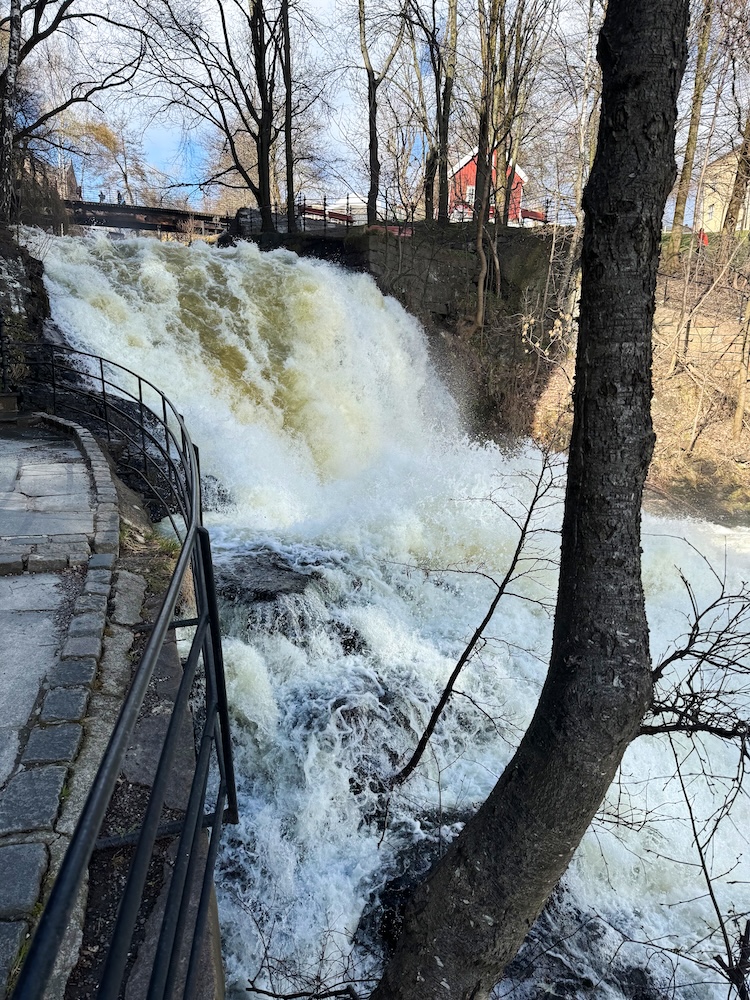
Day 9 – Exploring Oslo
It’s our one full day in Oslo and we’re going to cover museums today.
Start by taking the bus from the historic city center to Bygdøy. Here’s where you’ll find a handful interesting museums. When you’ve finished here, venture back into the city center for more exploring.
Viking Ship Museum – This was high on my list as this museum not only has viking artifacts but has an actual viking ship inside its museum. However, the museum is currently undergoing some significant modifications and it’s closed until 2027. Some of the viking artifacts are temporarily housed in Historical Museum, but unfortunately you won’t be able to see the viking ship.
Fram Museum – This is the museum I chose and I found it to be much more interesting than I expected. This museum focuses not only on the Fram but also on the Gjøa. Both were explorer ships from Norway that sailed to the polar regions. Learn about the expeditions and also see the ships up close (and walk into them).
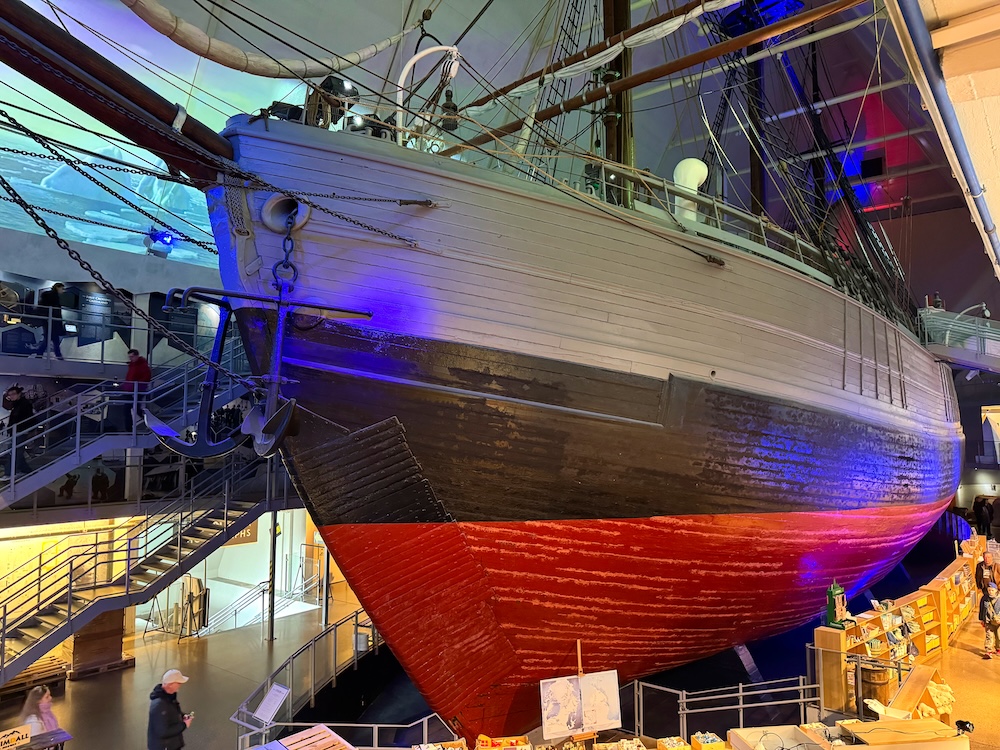
Kon-Tiki Museum – Just across from the Fram Museum, you’ll find the Kon-Tiki Museum which also focuses on sailing, this time focusing on Thor Heyerdahl and his voyages to try to prove that South Americans settled in Polynesia.
Norwegian Maritime Museum – Norway has a large maritime history, which by now shouldn’t come as a surprise. While all of the other museums I’ve covered so far focus on a specific area of Norwegian maritime history, this museum is more general, giving a larger overview.
Norwegian Folk Museum – For a break from maritime sightseeing, you could visit the Norwegian Folk Museum, also in Bygdøy, which focuses on traditional Norwegian Folk Culture.
Norwegian Resistance Museum – This is the one museum I’m mentioning that’s not in Bygdøy. The Norwegian Resistance Museum is part of Akershus Fortress and tells the story of the Nazi Occupation of Norway. The museum is interesting but is a bit dated.
Which museums you do are up to you. I really enjoyed the Fram Museum and would have loved to do the Viking Ship Museum. I wish I would have visited the Kon-Tiki Museum instead (since the Viking Ship Museum was closed), but that’s personal preference. I also visited the Norwegian Resistance Museum which provided a unique insight into World War II. When I was in school, I don’t recall ever talking about Norway’s involvement in the war, so this was a very interesting look into the Nazi occupation of Norway.
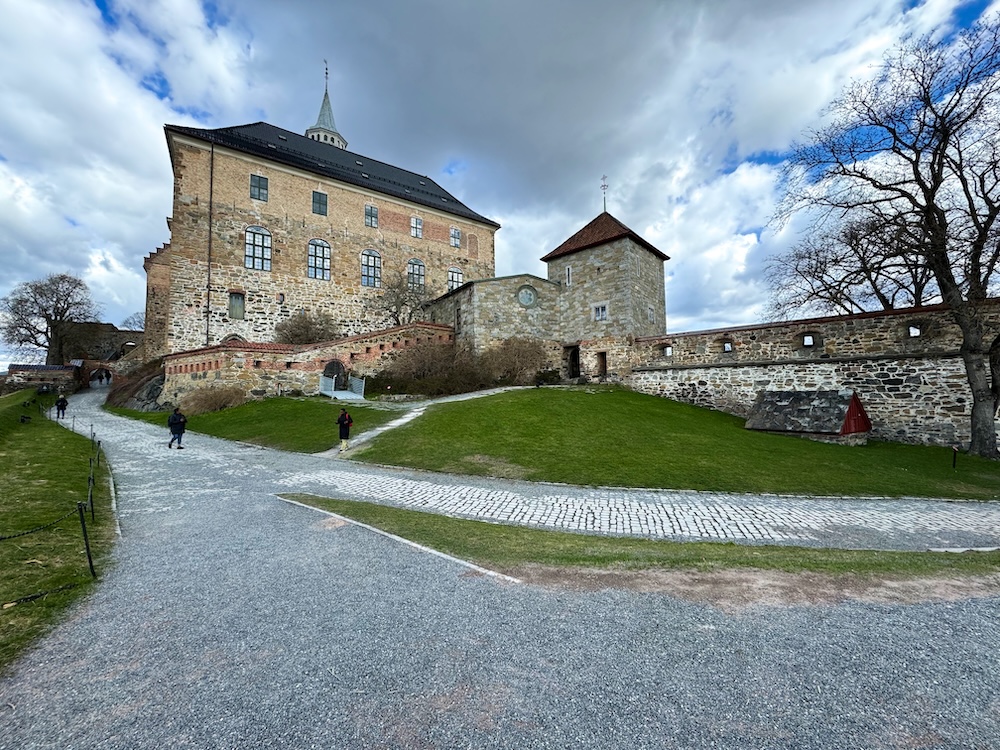
In the late afternoon, once you’ve finished with your museums in Bygdøy, head back to the city center and visit Vigeland Park. This sculpture park houses hundreds of statues created by Norwegian sculptor Gustav Vigeland. It’s part of the larger Frognerparken, but many tourists just focus on the sculptures. The highlight is the monolith made up the sculptures of multiple humans.
If you want to learn more about Vigeland and his life, consider a visit to the Vigeland Museum which is right nearby Frognerparken.
As with every other evening on this 10 day Scandinavia itinerary, the evening is yours to explore.
Sleep: Oslo, Norway
Day 10 – Fly Home
Your 10 days in Scandinavia are over. Head to the airport and catch a flight home (or on to your next destination).

10 Day Scandinavia Itinerary Recap
Day 1: Arrive in Copenhagen. Sleep in Copenhagen.
Day 2: Explore Copenhagen. Sleep in Copenhagen.
Day 3: Train from Copenhagen to Stockholm. Sleep in Stockholm.
Day 4: Explore Stockholm. Sleep in Stockholm.
Day 5: Day Trip from Stockholm. Sleep in Stockholm.
Day 6: Train from Stockholm to Gothenburg. Sleep in Gothenburg.
Day 7: Explore Gothenburg. Sleep in Gothenburg.
Day 8: Bus from Gothenburg to Oslo. Sleep in Oslo.
Day 9: Explore Oslo. Sleep in Oslo.
Day 10: Fly Home
Hotels Needed
Days 1-2: Copenhagen, Denmark (2 nights)
Days 3-5: Stockholm, Sweden (3 nights)
Days 6-7: Gothenburg, Sweden (2 nights)
Days 8-9: Oslo, Norway (2 nights)
Transportation Needed
Day 3: Train from Copenhagen to Stockholm.
Day 6: Train from Stockholm to Gothenburg.
Day 8: Bus from Gothenburg to Oslo.

When to Do This Scandinavia Itinerary
Winters have the fewest visitors and therefore you can expect a slightly lower price. However, winters have the worst weather (expect it to be cold) and have limited daylight. For example, in Copenhagen, the southern most city on this itinerary has the sun rising around 8:30 am and setting at about 4:00 pm in January. Stockholm and Oslo are further north and the sun can set as early as 3:00 pm.
Summers have long days with the sun not setting until 9:00 or 10:00 pm. You’ll also have the best weather. However, crowds are at their highest.
Typically, shoulder season can offer the best mix between daylight hours, weather, and tourist crowds. But I personally would recommend traveling very late spring to very early summer or very late summer into very early fall if you’re going to travel during shoulder season. Basically, try to catch that cut over between spring and summer or summer and fall.
I traveled in mid April. There were a handful of days with decent weather but other days were down right cold (especially those days where it rained). Additionally, some sights still had limited hours and activities like cruising Stockholm’s archipelago weren’t really an option. It’s for this reason that I recommend traveling later than mid April.
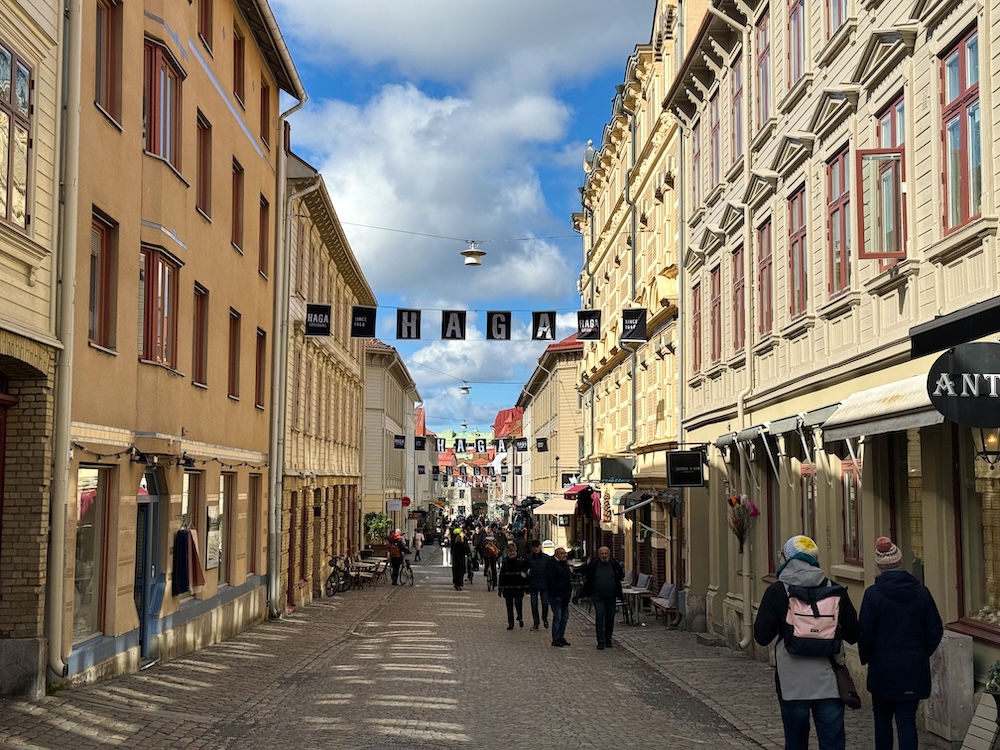
Budget Tips
Scandinavia is notoriously an expensive place to travel. It absolutely can be, but there are ways to save money and minimize your costs. While I’ll have an entire post about budgeting for Scandinavia, here’s my big pieces of advice to help keep costs down for your 10 days in Scandinavia.
Book early, particularly for trains. The long distance trains are cheaper the earlier you book, which can save you a lot of money.
Budget extra money for sit down restaurants or be prepared to look for other options such as fast food, convenience stores, or supermarkets.
Be selective of your activities. Prices can add up quickly if you don’t pay attention.
On your journey from Copenhagen to Stockholm, you could look into taking a night train. A night train (or bus) combines the cost of accommodation and transportation into one. You may not have the best night sleep, but you may find yourself saving some money. If you choose that route, you’ll save most of day 3 on this itinerary. It’s your choice if you want to spend that in Denmark (by taking the night train at the end of day 3) or in Sweden (by taking the night train at the end of day 2).
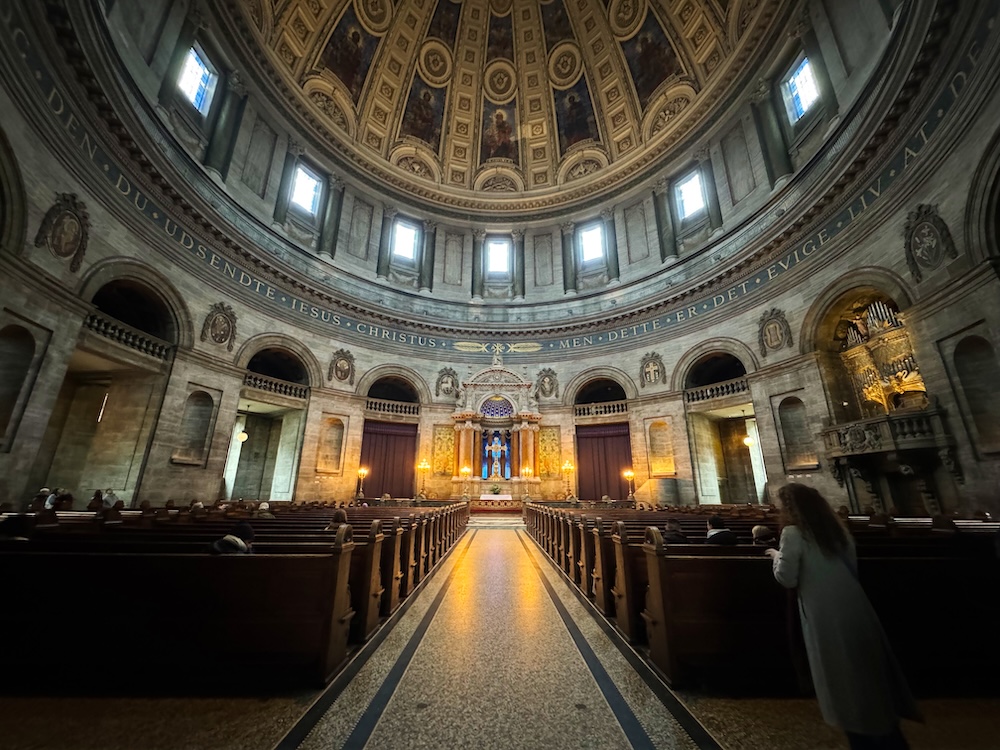
Final Thoughts
Scandinavian cities don’t rank as high on the excitement scale as some other places in Europe. However, that doesn’t mean that you shouldn’t visit. Rather, you need to have realistic expectations. But, with 10 days in Scandinavia, I think you can put together a pretty great itinerary that covers the highlights of the major cities of this region.
Continue Your Adventure
Denmark: No visit to Denmark would be complete without spending at least one day in Copenhagen, where you can tour several churches and have some fun at Tivoli Gardens. Plus, learn more in my Denmark Travel Guide.
Sweden: A visit to Sweden will generally include its capital city of Stockholm, which is full of awesome sights and museums. If you have extra time in Stockholm, consider a day trip to either Uppsala or Drottningholm Slott. But don’t miss Gothenburg, another great city that feels more relaxed than Stockholm. Continue your planning with my Sweden Travel Guide.
Norway: While so much of Norway’s beauty is found outside its cities, you can explore the highlights of Oslo with just one day. Plus, check out my Norway Travel Guide.
More Itineraries: Don’t have ten days, but still want to visit Scandinavia? Try my one week in Scandinavia itinerary or my itinerary for five days in Sweden. For more itineraries covering the best of Europe, consider my itineraries for Spain in 10 Days or 10 Days in Paris, Belgium, and Amsterdam.
